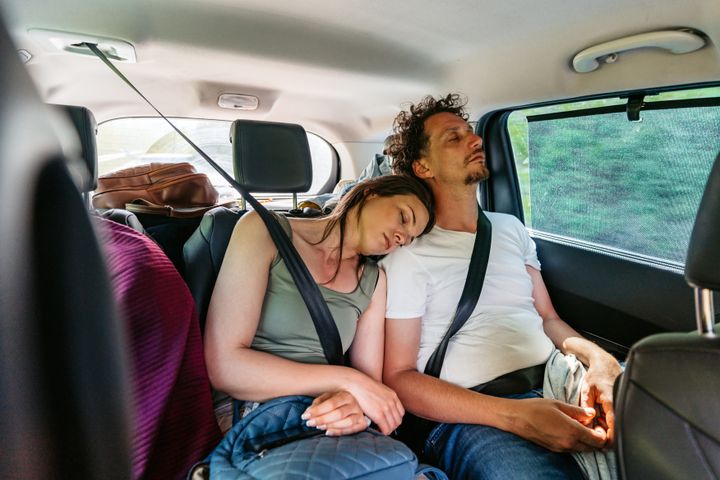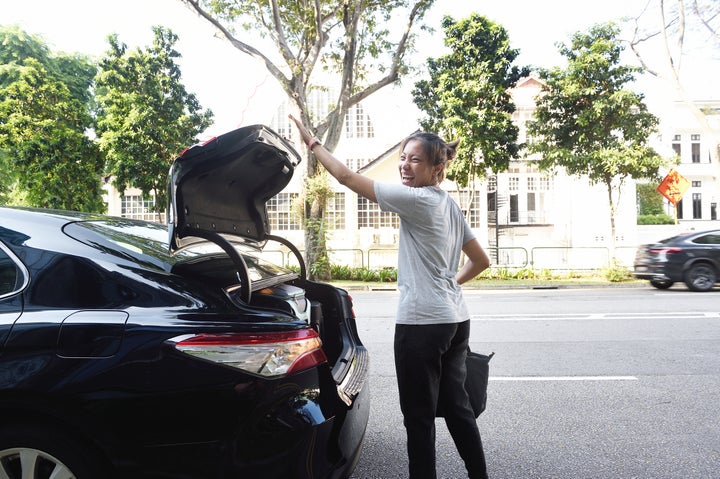
If you have a road trip planned this summer, you may be focused on the places you’ll visit, determining the route you’ll take, and prepping your car for the long journey.
These are all crucial steps for planning an unforgettable road trip, but there’s one very important task that can’t be overlooked. According to cardiologists, the single most important thing to do during lengthy car rides is to take breaks — lots of them.
It doesn’t matter who you are or what your overall health is like. Young or old, healthy or dealing with a chronic health condition, anybody and everybody should plan to get out of the car and move around every one to two hours if your trip will last at least four hours.
Sitting in the car for hours on end can disrupt blood flow in the body, lead to dehydration, and contribute to clots. Left untreated, those clots can spread and quickly become life-threatening.
“Riding in the car for a prolonged uninterrupted period of time in a seated position increases the risk of developing deep vein thrombosis (DVT) — a kind of blood clot that forms in the deep veins of the legs,” Dr. Vladimir Lakhter, an assistant professor of medicine at the Lewis Katz School of Medicine at Temple University and an interventional cardiologist at Temple University Hospital, told HuffPost.
Here’s what happens to blood flow in your body during car rides.
Typically, when you’re moving around, your calf and thigh muscles push blood from the deep veins in your body up toward your heart. After a few hours in the car, as the lower half of your body hangs down, blood starts to pool in the veins of your lower legs and calves, explained Dr. Britt H. Tonnessen, a Yale Medicine vascular surgeon and associate professor of surgery at Yale School of Medicine. Your muscles aren’t contracting — and circulating blood — as they normally do, Lakhter said.
As blood pools in your lower legs, platelets (tiny blood cells that help your body form clots to stop bleeding) begin to adhere to each other, forming a soft jelly-like mass. A coagulation cascade kicks in, where a series of physiological processes that are involved in blood clotting activate.
“Once this system is triggered, the clot can propagate much like knocking over a row of dominoes,” Tonnessen said.
Deep vein thrombosis occurs when a clot forms in a vein deep inside your body, such as in the lower leg or thigh. The clot can cause pain and swelling in the leg. When you start to walk around after being sedentary for several hours, the muscles will squeeze again and cause the clot to break loose, Lakhter said.
The clot will then flow with the natural direction of the body’s blood flow — upward. “A DVT can migrate and move to the main arteries in the lungs,” Tonnessen said, and cause a pulmonary embolism, or a sudden blockage in the arteries that pump blood to your lungs, that can be fatal. The main symptoms of pulmonary embolism include shortness of breath, chest pain, lightheadedness and dizziness, cough and pain in your back.
Who is at risk for a travel-induced blood clot?
Everyone. “Anyone can get a blood clot,” Tonnessen said. They can occur at any age and in people who are otherwise healthy, which is why it’s crucial to take breaks during your road trip and pay attention to the signs and symptoms of a clot, no matter what your overall health is like.
Certain people are more at risk. Older adults, people with a personal or family history of blood clots, people undergoing cancer treatment, and those with an inherited or acquired clotting disorder all face a heightened risk of experiencing DVT during or after a long road trip, according to Tonnessen. Recent surgery, which can cause you to be immobile for an extended period of time, can also increase your risk for a clot.
The more risk factors you have, the higher the chance you could get a clot while traveling. The risk of a clot doesn’t disappear the moment your journey ends. The risk is greatest in the week following your travels, but Lakhter says that heightened risk can linger for several weeks after a trip.

How to make the most of your breaks.
Tonnessen recommended getting out of the car and taking a brief walk every hour or so. Lakhter echoed the advice.
“Doing so allows the leg muscles to contract and keep the venous blood circulation moving efficiently,” he said.
It’s also important to stay hydrated (which, by the way, may force you to take more breaks since you may need to pee more). Dehydration is a known risk factor for clots.
“Maintaining adequate hydration also means minimising the intake of beverages which can dehydrate our bodies — these include caffeine and alcohol,” Lakhter said.
Wearing compression socks or stockings can reduce your risk of a clot, too, by supporting blood flow in your lower legs. Tonnessen’s recommendation: 20 to 30mmHg knee-high compression socks. Other than the compression socks, wear loose-fitting clothing, as tight apparel can further restrict blood flow throughout your body, according to Lakhter.
Those with an extremely high risk may need to take a blood thinner for travel, such as an injection of a low-molecular-weight heparin or a factor Xa inhibitor, Lakhter said. Talk to your health care provider to see if you may benefit from one of these preventive treatments.
If you delay or skip those breaks, make a point to move your legs in the car. The Centers for Disease Control and Prevention recommends extending your legs straight out and flexing your ankles so your toes are pointed toward you. Hold this position for 15 seconds, then repeat the exercise 10 times.
You can also do knee lifts, where you bend your legs and lift your knees to your chest, and a forward flex, where you bend over and reach for your ankles in 15-second increments. Simply tightening and releasing your leg muscles can help too.
Remember: The risk for DVT or pulmonary embolism persists even after your trip is over. Listen to your body, and if anything feels amiss, contact a health care provider as soon as possible. When it comes to blood clots, intervening early can prevent serious complications, and, in certain cases, be the difference between life and death.